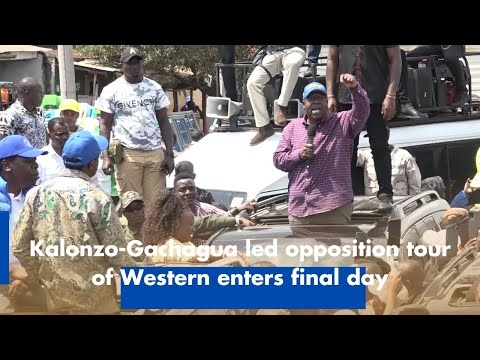ODM leader Raila Odinga has been the man to watch in Kenya’s political arena for years.
Raila first stood for president in 1997 in what he calls "testing the waters” and finished a distant third after the incumbent, President Daniel Moi, and Mwai Kibaki of DP
In 2002, he opted out of the presidential race after an acrimonious falling out with Moi. Their bone of contention? Moi tapped greenhorn Uhuru Kenyatta as his successor, leaving out Raila who had joined Kanu as the secretary general.
Raila believed Moi would support his presidential bid but that didn’t happen.
With his hopes dashed, Raila led a walk out from Kanu and joined the Liberal Democratic Party, which joined hands with the National Alliance Party of Kenya to form Narc, the coalition that won the 2002 General Election.
His “Kibaki Tosha” declaration changed the course of history by thrusting Kibaki, a famous political fence sitter, to power in spite of his immobility following a road accident in Ukambani during campaigns.
Raila vied for President for the second time in 2007, joining hands with the Pentagon. The top ODM brass consisted of Raila, William Ruto, Musalia Mudavadi, Najib Balala, Joe Nyagah and Charity Ngilu.
This time round, Raila was sure he would clinch the presidency. And he almost did, were it not for the daylight robbery of his victory by alleged Kibaki’s “Deep State”. This was the closest Raila came to occupying the House on the Hill.
In 2013, he ran again for the third time but lost to Uhuru and Ruto who were in the Jubilee Coalition. Once again, the presidential election was marred by irregularities and claims of rigging. His petition at the Supreme Court was unsuccessful.
This didn’t dampen his spirit and he vied for the fourth time in 2017.
The ODM leader lost but upon petitioning at the Supreme Court, President Kenyatta’s reelection was nullified.
He opted out of the repeat election, saying the electoral commission had not been reformed.
The stealing of elections did little to dampen Raila’s spirit in his long quest for the presidency.
Many had written him off after 2017, but the Handshake propped him up for the 2022 race, with his partner Uhuru by his side.
But as it is, the ODM boss is facing mounting challenges that could work against his presidential dreams.
There is no doubt he has lost some of his support bases around the country to his competitors.
The Coast region has for many years been and ODM and Raila’s stronghold.
But some leaders in this region have since last year been preparing to launch a homegrown party to be used in power bargain next year.
Kilifi Governor Amason Kingi is the man tasked to bring together a coalition of coastal parties. Where will this leave Raila and his ODM?
In March, former State House Director of Communications Denis Itumbi alleged that the “Deep State” was scheming Raila’s isolation at the Coast and countrywide.
Some political pundits say OKA, the new kid on the block, was formed to isolate Raila and kill Nasa.
Now, all Nasa principals have left for OKA and ODM cannot be the only party in the alliance. In other words, Nasa is as dead as a dodo. Where does this leave Raila?
The popularity of Deputy President William Ruto as a presidential candidate next year will ultimately deny Raila any support in the Rift Valley, which was a key vote bloc in his 2007 election. Where does this leave him?
In Central Kenya, hostility against Raila is palpable after years of being demonized by his current political allies. Sections of the mountain are divided: Some are solidly behind the DP, others singing to Uhuru’s tune and many a significant number constantly in meetings looking for the man or woman from the region to take over from President Kenyatta.
Interestingly, none is talking about Raila as a candidate. Where does this leave him?
Worse, Western Kenya is no longer at ease with the ODM chief.
The fact, however, remains that whether Raila runs or not, his mere presence is enough to impact the outcome of 2022 presidential election.











